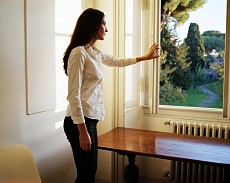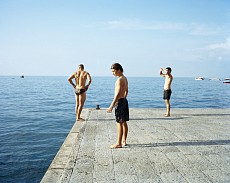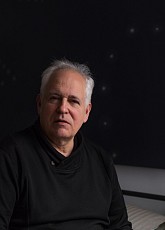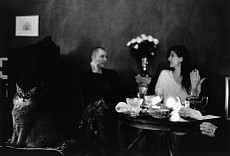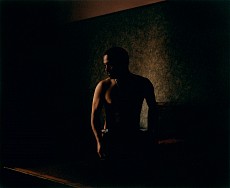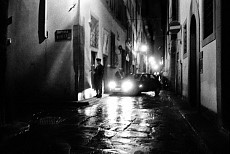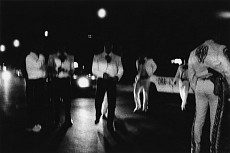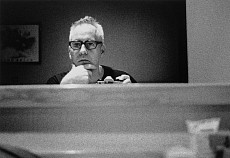COLLECTOR DAILY
July 10, 2019 - Loring Knoblauch
Two works in Allen Frame’s new show use vernacular photographs that he discovered during a recent year-long residency in Rome as the jumping off point for hybrid wall-filling installations that put the found images into dialogue with his own photographs. The open-ended mysteries of the anonymous vintage photographs offered Frame the opportunity to graft his own interpretations onto the scenes, and he then went on to expand those themes further, twisting past and present into intimately coupled meditations...
The subtle codes of human attraction that inform the two installations are generally absent from Frame’s larger color images. The pictures instead capture pauses – the in-between moments that happen just before and after something else. Ivana looks out of a widow that could be a painting of the Italian countryside, Ugo checks his phone as he walks down the repaired stairs of an older stone balcony, and Pietro sits on the edge of a swimming pool, looking to his right out of the frame. The photographs linger, and that slowness provides space for vicariously stepping into the lull.
In many ways, these pictures are all testing Frame’s ability to find a particular emotional pitch and stay there, allowing it to blossom and expand into something more complex and intricate. In each of these works/projects, he’s trying to capture invisible restlessness, and attempting to freight his understated scenes with a tiny slice of agitation. When he successfully plucks that string, his pictures shimmer with unseen vibrations.
link to full article

